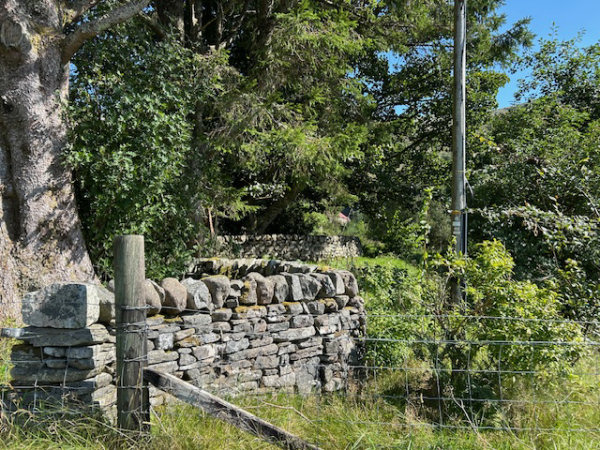The Old House, Glen Orchy, Sculpture Park
The Garden Sculptures
When we arrived at Arichastlich in 1994 most of the ground around the house was a grazed paddock, apart from the Beech Trees and Scots Pine Trees. The Beech are probably an abandoned hedge, now grown too large, and the Scots Pines, planted by The Earl of Breadalbane when he built Arichastlich as a fishing lodge, all seem to date from the 1830’s. The Scots Pines are now badly damaged by strong winds and Honey Fungus, though a wonderful wild underplanting of Rowan, Beech and Bluebells is filling the gaps rapidly, but still a good example of “Grannie” pines. We garden in a natural “witchy” style, encouraging those plants, trees and shrubs that grow vigorously, whilst accepting that not everything will survive, and we do have disasters! The land on the hillside which provides our water and Hydro Power, we have deliberately left to regenerate completely naturally, without any intervention.
Please feel free to wander the grounds and discover a varied range of “installations”, often growing and changing. We always welcome the chance to talk about gardening and exchange plans, ideas and comments!
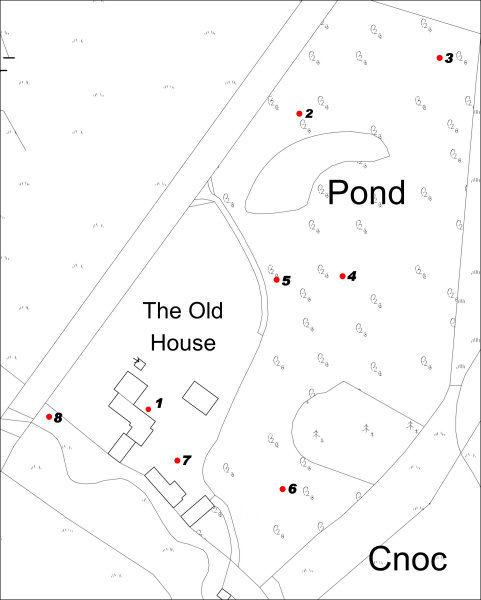
1. “Plumpy” the Partick Pigeon
He sits on the wall between the two houses, looking rather plump hence his name! I think he comes from a part of Glasgow known as Partick, but actually has a number of friends on Leith Walk in Edinburgh. He is designed by Shona Kinloch MRSS, a Scottish sculptor based in East Kilbride.
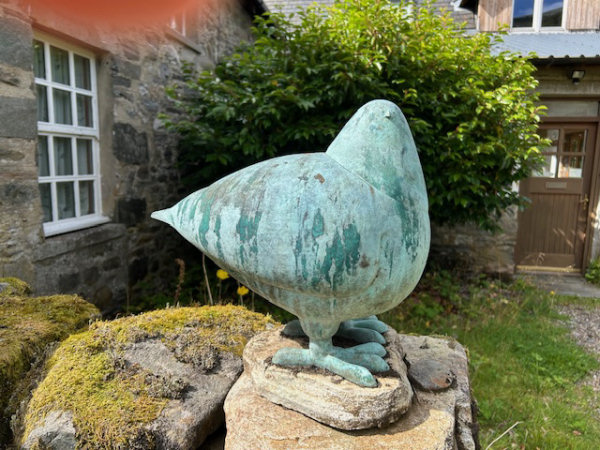
2. “Tumshie”
Tumshie is perched on a number of tree trunks overlooking the large pond out in the field. He has been painted red, and is, in fact, an ancient farm implement created to split turnips, hence the name, Tumshie, which is an old Scots word for a turnip!
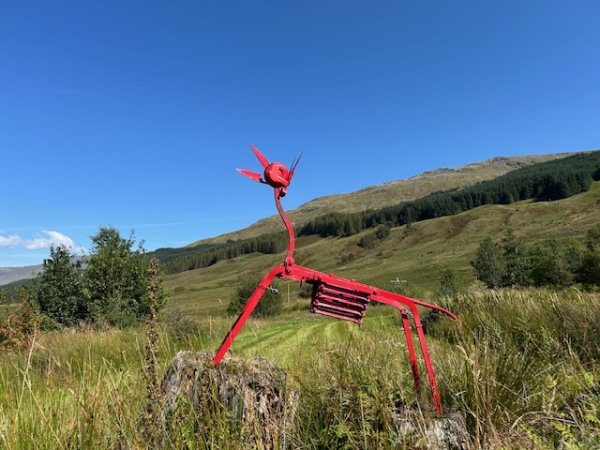
3. The Inukshuk
An "inuksuk" (also spelled inukshuk) is a stone landmark or cairn traditionally built by Inuit, Iñupiat, Kalaallit, Yupik, and other Arctic peoples. These structures serve various purposes, including guiding travellers, marking hunting and fishing areas, warning of danger, or signifying a place of reverence. The word "inukshuk" means "in the likeness of a human.
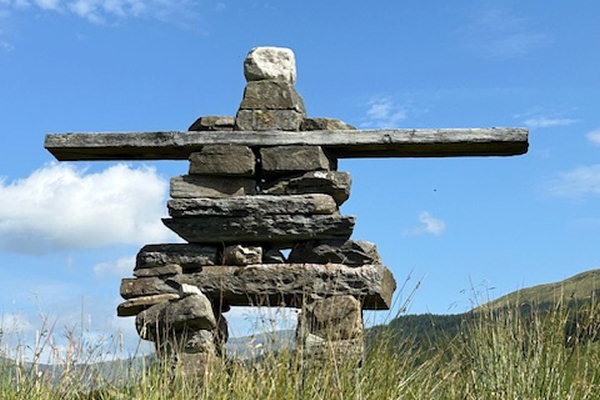
4. The Sharpening Stone
This has been carefully mounted in order to be able to see it turn, However, it was traditionally at a 45° angle in order to sharpen farming tools, mainly hand sheep shears.
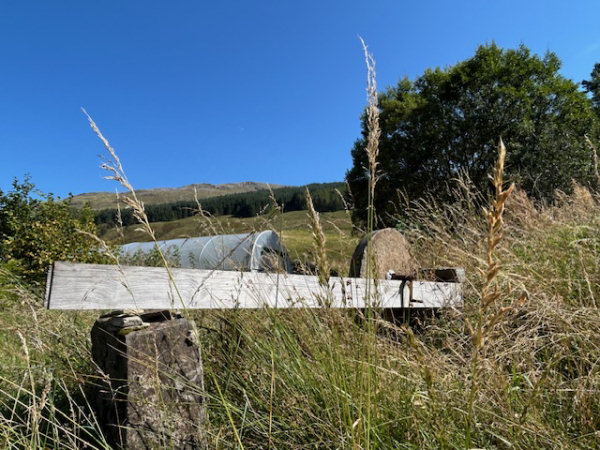
5. The Red Poles
Ten red painted tree trunks (blown down in a gale a few winters ago) are an installation, paying homage to Charles Jencks who was a Cultural Theorist and Landscape Designer. He also co-founded the Maggie’s Cancer Care Centres.
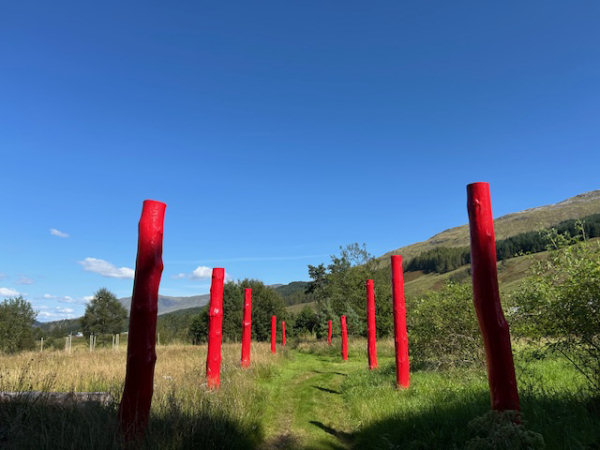
6. Super Lambanana
He is a most attractive young lamb, with the tail of a banana, designed by Taro Chiezo in 1998 for Britain’s Art TransPennine Exhibition and residing mainly in Liverpool. However, this one is making a break for freedom on a Windsurfer!
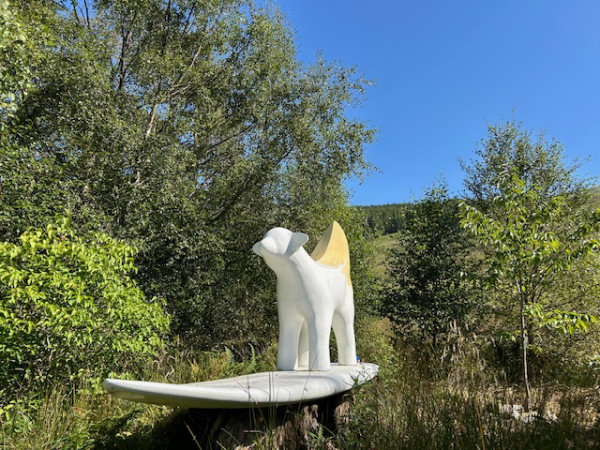
7. The Geese
There are two white geese keeping each other company and protecting our hens. They were purchased at Royal Hampton Court Flower Show in 1994.
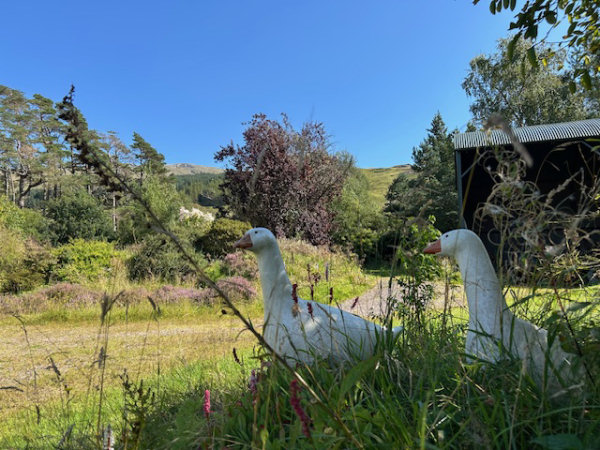
8. The Wiggly Wall
A dry stone dyke winding round the trees, best viewed from near the bridge on the roadside (B8074) outside the garden, in winter when the leaves are gone!
